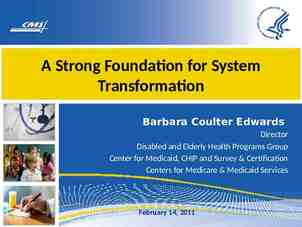Why is Anyone On Meal Plan? An Analysis of Dining Economics at Brown
27 Slides3.77 MB
Why is Anyone On Meal Plan? An Analysis of Dining Economics at Brown University By Zach, Grace, and Liv
Background People need to eat Many food options around Brown University On campus options Joes, Ratty, V-Dub, Blue Room, etc. Off campus Chipotle, Better Burger, Mama Kims, etc Students have the option to eat at any of these establishments, but the method of payment differs between them
Many Ways to Pay Off campus only accepts cash On campus accepts Meal Credits (MC) or cash Cost/meal is 1 swipe Dollar value varies between institution Joes - 6.60 Ratty - 12.60, also dependent on time of day “Although meals are available on a cash basis, plans offer a much lower per-meal cost and are therefore a better value.” – Food Services
Menu of Options Available Plan Cost Meals/ Week Meals/ Year Optimal Cost/Meal % on plan Flex 460 4,284 N/A 546 7.85 50.0% Flex 330 4,030 N/A 361 11.16 7.5% Flex 240 3,654 N/A 261 14.00 10.0% Meals/ Week 20 4,284 20 34 6.36 21.5% Meals/ Week 14 4,030 14 27 8.48 0.9% Meals/ Week 10 3,654 10 19 10.78 1.9% Optimal : average cost/ meal if use up all the credits and points
Survey 117 Randomly Chosen Brown Students
# of participants Histogram of Survey Data # of meal credits used per week
Odd Observation Most ( 80%) of people are on meal plan Most of those (72%) are on one of the two biggest plans At the end of the year/semester, Joes is looted 50% of people end the year with 20 or more unused meal credits Average person wastes 31.6 credits Are people overpurchasing?
Questions With a menu of meal plans available, and the option to not be on meal plan at all, how do people choose plans? What does this choice say about peoples perception of off campus costs?
Standard Economic Explanation People choose the plan that minimizes their total food costs Buying larger plans that might waste credits is a product of peoples attempts to purchase larger bundles, get economies of scale. People purchase on campus rather than off campus because it is cheaper
Simplifications/Assumptions in the Model Sole determinant of behavior is desire to minimize costs Quality, convenience, portion size, not considered People’s consumption behavior stays the same no matter what plans they are on People can only spend integer number of credits People know their distribution of consumption Once people run out of meals, they cannot eat at the on-campus eateries
Ideal VS Actual Data Ideal data would be individual’s daily consumption pattern for a year, split into meal credits used, by eatery Actual Data: We randomly sampled 94 people and asked how many meal credits they used yesterday and today and then derived their consumption pattern per week from there.
The Model Min j i,z X ( i, j ,Z) Xi,j Pj Pr ( Ci aj) * E [ ci-ai ci ai ]*Z Ci D (μ , σ ) Plan j aj # of meals in the bundle Pj price of the bundle Z – price per off-campus meal X(I, j, z) – total cost of consumption C i - # of total meals consumed per person Pr ( C i aj) – probability of consuming more meals than the bundle Flex 460 - Pr ( C i 546), Ci is annual consumption Weekly 20 – Pr( Sum(Max( C i-3,0),1,224) 34) E [ ci-ai ci ai ] – expected # of meals consume off-campus
Methodology Derive people’s meal credits consumption pattern by looking at their meal credits used in the past two days Split into two groups and calculate its mean, distribution. Big Eaters: People on the highest two meal plans, Flex 460 and 20 meals/week Small eaters: Rest of the population Calculate Probability consumption greater than max allowed, expected value given consumption is greater than max allowed, to determine expected meals beyond what is available on plan
Methodology Given this number of meals, cost compare to being on no meals plan such that total cost (mean consumption)*price Z Implies cost that makes you indifferent between being on a given meal plan, or not, for a certain price of off campus food The plan that has the lowest Z value is considered the cheapest
Results (1) Distribution n Big Eaters Flex 460 Purchasers (subset of Big Eaters) Little Eaters 73 57 21 567.67 31.19 535.36 35.39 378.67 41.28 8.30% 10% 9.10% 18% 11% 14.30% Pr exceed annual limit (Flex 460, Flex 460, Flex 330) 84% 39.00% 66% Annual expected meals over max (20, 20, 14) 4.22 4.518 27.2 Annual expected meals over max (Flex 460, Flex 460, Flex 330) 29.2 10.14 26.598 Avg. meals/year Std. Dev Pr exceed daily limit (20, 20, 14) Pr exceed weekly limit (20, 20, 14)
Results (2) Distribution Big Eaters Breakeven Optimal Meal Plan Savings vs. 2nd best, Z 10 Flex 460 Purchasers (subset of Big Eaters) Little Eaters 7.61 20/week 8.03 20/week 247.82 11.48 14/week 86.04 ( 506.70)
Answers to the Previous Question Q: What are people’s perception of off campus costs? Big eaters are consuming on campus meals at cost on average on par with the off campus meal. Small eaters are consuming at a rate that’s above average cost of off campus meals. Q: With a menu of meal plans available, and the option to not be on meal plan at all, how do people choose plans? Big eaters are cost conscious to a degree but they are not choosing the optimal plan. Small eaters are not cost minimizing.
New questions from the result Why are big eaters on flex instead of weekly plans? Why do small eaters choose to stay on meal plan?
Deferred Loss Realization People may be sensitive to “wasting” meal credits Odean gives account of traders who don’t sell losing investments quickly People don’t like recognizing “losses” – even if they’ve already occurred Credits are “wasted” when they are no longer able to be used Flex gives less credits, so less are wasted, and only occurs at end of the year
Considering Wasted Meal Credits as a Cost People may view meal credits as equivalent to money, don’t want to waste it “Saving” when they waste fewer meal credits, even though fiscal cost already recognized Thaler gives account of people who “save” in one account, while spending out of another “account” Not using a credit has negative utility
Model Adjustment Utility Ideal consumption – Overconsumption – Under consumption U Ui - Pr ( Ci aj) * E [ ci-ai ci ai ]*Z - Pr ( Ci aj) * E [ai-ci ci ai ]*Z’ Z’ is the “cost” of wasting a meal Draw Graph to illustrate
Big Eater Explanation Weekly 20 Pr Wasting Meal/Day Pr Wasting Meal/Year Expected "Wasted" Meals Dollar Cost Disutiliy Coeff (Z’) New Utility Flex 57%N/A N/A 75% 168 17 4,299.36 4,385.40 0.57 0.57 4395.12 4395.09
Possible Reason for Small Eaters Highest on-campus meal plan (-4400, 3900) B M Smaller on-campus meal meal plan B (-4400, 3900) (-4200, 3900) (-4200, 3900) M Paying Paying off-campus meals (yearly) (-4000, 4000) B B Behave, M Misbehave M (-4500, 4500)
Principal-Agent Problem Principal-agent relationship Restaurant owner—waiter Software company—salesman Interests of agents are not perfectly aligned with those o the principals Asymmetrical Information Moral Hazard Ohad Kadan, Philip J. Reny, and Jeroen M. Swinkels (2009 Agent has no private information Pure moral hazard Agent’s only action is a participation decision
Survey 117 Randomly Chosen Brown Students
Conclusion Optimal plans for big eaters : 20 meals/ week small eaters: 14 meals/ week Big Eaters are cost-conscious but appear to have some disutility with “wasting” meals. Hence they choose to switch to the flex even though the weekly plan is more cost minimizing. Small eaters may be cost-conscious but the principal agent dilemma overrides their ability to minimize their cost.
References Stefano DellaVigna, Ulrike Malmendier. 2005. “ Pay Not To Go To The Gym” Kaniska Dam, David Perez-Castril. 2003. “ The Principal-Agent Matching Market” Terrance Odean, 1998. “Are Investors Reluctant to Realize Their Losses?” Ohad Kadan, Philip J. Reny, Jeroen M. Swinkels. 2009. “ Existence of Optimal Mechanisms in Principal-Agent Problems” "Meal Plan choices and Pricing." Brown Dining. N.p., Web. 1 Dec. 2012.
































